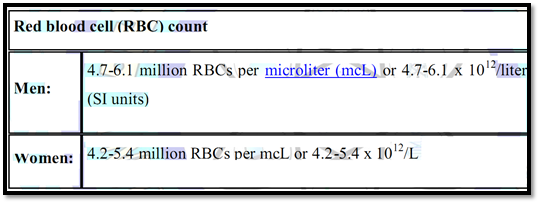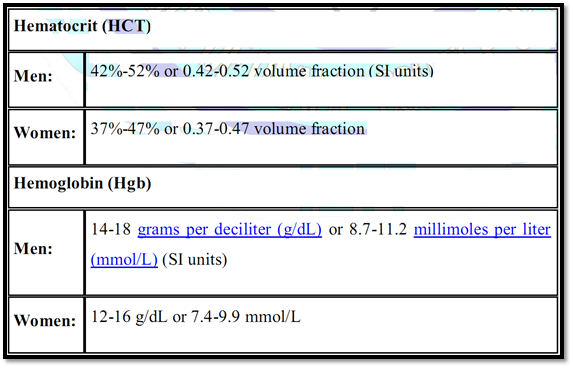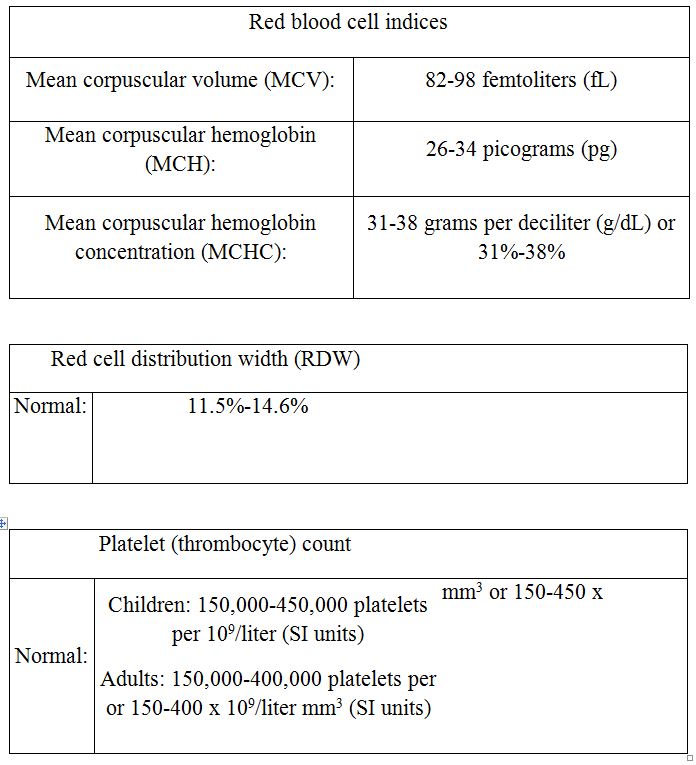

النبات

مواضيع عامة في علم النبات

الجذور - السيقان - الأوراق

النباتات الوعائية واللاوعائية

البذور (مغطاة البذور - عاريات البذور)

الطحالب

النباتات الطبية


الحيوان

مواضيع عامة في علم الحيوان

علم التشريح

التنوع الإحيائي

البايلوجيا الخلوية


الأحياء المجهرية

البكتيريا

الفطريات

الطفيليات

الفايروسات


علم الأمراض

الاورام

الامراض الوراثية

الامراض المناعية

الامراض المدارية

اضطرابات الدورة الدموية

مواضيع عامة في علم الامراض

الحشرات


التقانة الإحيائية

مواضيع عامة في التقانة الإحيائية


التقنية الحيوية المكروبية

التقنية الحيوية والميكروبات

الفعاليات الحيوية

وراثة الاحياء المجهرية

تصنيف الاحياء المجهرية

الاحياء المجهرية في الطبيعة

أيض الاجهاد

التقنية الحيوية والبيئة

التقنية الحيوية والطب

التقنية الحيوية والزراعة

التقنية الحيوية والصناعة

التقنية الحيوية والطاقة

البحار والطحالب الصغيرة

عزل البروتين

هندسة الجينات


التقنية الحياتية النانوية

مفاهيم التقنية الحيوية النانوية

التراكيب النانوية والمجاهر المستخدمة في رؤيتها

تصنيع وتخليق المواد النانوية

تطبيقات التقنية النانوية والحيوية النانوية

الرقائق والمتحسسات الحيوية

المصفوفات المجهرية وحاسوب الدنا

اللقاحات

البيئة والتلوث


علم الأجنة

اعضاء التكاثر وتشكل الاعراس

الاخصاب

التشطر

العصيبة وتشكل الجسيدات

تشكل اللواحق الجنينية

تكون المعيدة وظهور الطبقات الجنينية

مقدمة لعلم الاجنة


الأحياء الجزيئي

مواضيع عامة في الاحياء الجزيئي


علم وظائف الأعضاء


الغدد

مواضيع عامة في الغدد

الغدد الصم و هرموناتها

الجسم تحت السريري

الغدة النخامية

الغدة الكظرية

الغدة التناسلية

الغدة الدرقية والجار الدرقية

الغدة البنكرياسية

الغدة الصنوبرية

مواضيع عامة في علم وظائف الاعضاء

الخلية الحيوانية

الجهاز العصبي

أعضاء الحس

الجهاز العضلي

السوائل الجسمية

الجهاز الدوري والليمف

الجهاز التنفسي

الجهاز الهضمي

الجهاز البولي


المضادات الميكروبية

مواضيع عامة في المضادات الميكروبية

مضادات البكتيريا

مضادات الفطريات

مضادات الطفيليات

مضادات الفايروسات

علم الخلية

الوراثة

الأحياء العامة

المناعة

التحليلات المرضية

الكيمياء الحيوية

مواضيع متنوعة أخرى

الانزيمات
Complete Blood Count
المؤلف:
المرجع الالكتروني للمعلوماتية
المصدر:
almerja.com
الجزء والصفحة:
15-2-2016
9276
Complete Blood Count (CBC)
A complete blood count (CBC) gives important information about the kinds and numbers of cells in the blood, especially red blood cells , white blood cells , and platelets. A CBC helps your health professional check any symptoms, such as weakness, fatigue, or bruising, you may have. A CBC also helps him or her diagnose conditions, such as anemia, infection, and many other disorders.
A CBC test usually includes:
- White blood cell (WBC, leukocyte) count. White blood cells protect the body against infection. If an infection develops, white blood cells attack and destroy the bacteria, virus, or other organism causing it. White blood cells are bigger than red blood cells but fewer in number. When a person has a bacterial infection, the number of white cells rises very quickly. The number of white blood cells is sometimes used to find an infection or to see how the body is dealing with cancer treatment.
- White blood cell types (WBC differential). The major types of white blood cells are neutrophils, lymphocytes, monocytes, eosinophils, and basophils. Immature neutrophils, called band neutrophils, are also part of this test. Each type of cell plays a different role in protecting the body. The numbers of each one of these types of white blood cells give important information about the immune system. Too many or too few of the different types of white blood cells can help find an infection, an allergic or toxic reaction to medicines or chemicals, and many conditions, such as leukemia.
- Red blood cell (RBC) count. Red blood cells carry oxygen from the lungs to the rest of the body. They also carry carbon dioxide back to the lungs so it can be exhaled. If the RBC count is low (anemia), the body may not be getting the oxygen it needs. If the count is too high (a condition called polycythemia), there is a chance that the red blood cells will clump together and block tiny blood vessels (capillaries). This also makes it hard for your red blood cells to carry oxygen.
-Hematocrit )HCT, packed cell volume, PCV). This test measures the amount of space (volume) red blood cells take up in the blood. The value is given as a percentage of red blood cells in a volume of blood. For example, a hematocrit of 38 means that 38% of the blood's volume is made of red blood cells. Hematocrit and hemoglobin values are the two major tests that show if anemia or polycythemia is present.
- Hemoglobin )Hgb). The hemoglobin molecule fills up the red blood cells. It carries oxygen and gives the blood cell its red color. The hemoglobin test measures the amount of hemoglobin in blood and is a good measure of the blood's ability to carry oxygen throughout the body.
-Red blood cell indices. There are three red blood cell indices: mean corpuscular volume (MCV), mean corpuscular hemoglobin (MCH), and mean corpuscular hemoglobin concentration (MCHC). They are measured by a machine and their values come from other measurements in a CBC. The MCV shows the size of the red blood cells. The MCH value is the amount of hemoglobin in an average red blood cell. The MCHC measures the concentration of hemoglobin in an average red blood cell. These numbers help in the diagnosis of different types of anemia. Red cell distribution width (RDW) can also be measured which shows if the cells are all the same or different sizes or shapes.
- Platelet) thrombocyte) count. Platelets (thrombocytes) are the smallest type of blood cell. They are important in blood clotting. When bleeding occurs, the platelets swell, clump together, and form a sticky plug that helps stop the bleeding. If there are too few platelets, uncontrolled bleeding may be a problem. If there are too many platelets, there is a chance of a blood clot forming in a blood vessel. Also, platelets may be involved in hardening of the arteries (atherosclerosis) .
-Mean platelet volume (MPV). Mean platelet volume measures the average amount (volume) of platelets. Mean platelet volume is used along with platelet count to diagnose some diseases. If the platelet count is normal, the mean platelet volume can still be too high or too low. Your doctor may order a blood smear test to be done at the same time as a CBC but it is not part of the regular CBC test. In this test, a drop of blood is spread (smeared) on a slide and stained with a special dye. The slide is looked at under a microscope. The number, size, and shape of red blood cells, white blood cells, and platelets are recorded. Blood cells with different shapes or sizes can help diagnose many blood diseases, such as leukemia, malaria, or sickle cell disease.
Why It Is Done
A complete blood count may be done to:
-Find the cause of symptoms such as fatigue, weakness, fever, bruising, or weight loss.
- Find anemia.
-Diagnose polycythemia.
- Find an infection.
-Diagnose diseases of the blood, such as leukemia.
-Check how the body is dealing with some types of drug or radiation treatment.
-Check how abnormal bleeding is affecting the blood cells and counts.
-Screen for high and low values before a surgery.
- This may help find other conditions, such as too many eosinophils may mean an allergy or asthma is present.
-A complete blood count may be done as part of a regular physical examination. A blood count can give valuable information about the general state of your health.
Normal
1- Normal values for the complete blood count (CBC) tests depend on age, sex, how high above sea level you live, and the type of blood sample. Your health professional may use all the CBC values to check for a condition. For example, the red blood cell (RBC) count, hemoglobin (Hgb), and hematocrit (HCT) are the most important values needed to tell whether a person has anemia, but the red blood cell indices and the blood smear also help with the diagnosis and may show a possible cause for the anemia.
2- To see if the white blood cell (WBC, leukocyte) count is good and how the cells look on the smear, your health professional will look at both the number (WBC count) and the WBC differential. To see whether there are too many or too few of a certain type of cell, your health professional will look at the total count and the percentage of that particular cell. There are normal values for the total number of each type of white cell.
3- Pregnancy can change these blood values. Your doctor will talk with you about normal
values during each trimester of your pregnancy.
Normal values
White blood cell (WBC, leukocyte) count
Men and women:
/11,0004,500mcL3 or 4.5-11.0 x 109/liter (SI units(
White blood cell types (WBC differential)
Neutrophils: 50%-62% Band neutrophils: 3%-6% , Lymphocytes: - 40%-25% , Monocytes: 3%-7%, Eosinophils: 0%-3% ,Basophils:0%-1%.


In general, a normal hemoglobin level is about one-third the value of the hematocrit.


High values
Red blood cell (RBC)
- Conditions that cause high RBC values include smoking, exposure to carbon monoxide, long-term lung disease, kidney disease, some cancers, certain forms of heart disease, alcoholism, liver disease, a rare disorder of the bone marrow (polycythemia vera), or a rare disorder of hemoglobin that binds oxygen tightly.
- Conditions that affect the body's water content can also cause high RBC values. These conditions include dehydration, diarrhea or vomiting, excessive sweating, severe burns, and the use of diuretics. The lack of fluid in the body makes the RBC volume look high; this is sometimes called spurious polycythemia.
White blood cell (WBC, leukocyte)
- Conditions that cause high WBC values include infection, inflammation, damage to body tissues (such as a heart attack), severe physical or emotional stress (such as a fever, injury, or surgery), burns, kidney failure, lupus, tuberculosis (TB), rheumatoid arthritis, malnutrition, leukemia, and diseases such as cancer.
- The use of corticosteroids, underactive adrenal glands, thyroid gland problems, certain medicines, or removal of the spleen can also cause high WBC values.
Platelets
- High platelet values may be seen with bleeding, iron deficiency, some diseases like cancer, or problems with the bone marrow.
Low values
Red blood cell (RBC)
1- Anemia lowers RBC values. Anemia can be caused by heavy menstrual bleeding, stomach ulcers, colon cancer, inflammatory bowel disease, some tumors, Addison's disease, thalassemia, lead poisoning, sickle cell disease, or reactions to some chemicals and medicines. A low RBC value may also be seen if the spleen has been taken out.
2- A lack of folic acid or vitamin B12 can also cause anemia, such as pernicious anemia, which is a problem with absorbing vitamin B12.
3- The RBC indices value and a blood smear may help find the cause of anemia.
White blood cell (WBC, leukocyte)
1- Conditions that can lower WBC values include chemotherapy and reactions to other medicines, aplastic anemia, viral infections, malaria, alcoholism, AIDS, lupus, or Cushing's syndrome.
2- A large spleen can lower the WBC count.
Platelets
1- Low platelet values can occur in pregnancy or idiopathic thrombocytopenic purpura (ITP) and other conditions that affect how platelets are made or that destroy platelets.
2- A large spleen can lower the platelet count.
What Affects the Test
Reasons you may not be able to have the test or why the results may not be helpful include:
1 -If the elastic band was on your arm a long time while the blood sample was taken.
2- Taking medicines that can cause low platelet levels. Some examples of the many medicines that cause this include steroids, some antibiotics, thiazide diuretics, chemotherapy medicines, quinidine, and meprobamate (Equanil, Miltown, Meprospan).
3- A very high white blood cell count or high levels of a type of fat (triglycerides). These can cause falsely high hemoglobin values.
4- Having an enlarged spleen, this may cause a low platelet count (thrombocytopenia) or a low white blood cell count. An enlarged spleen may be caused by certain types of cancer.
5- Pregnancy, which normally causes a low RBC value and less often a high WBC value.
6- Clumping of platelets in the test tube. This can cause a falsely low platelet count and occurs because of the substance used in the test tube.
What To Think About
The white blood count can change by as much as 2,000 WBCs per microliter (mcL) from exercise, stress, or smoking.
1- Children normally have higher WBC (leukocyte) counts than adults.
2- Other red blood cell tests that may be done include:
A- Erythrocyte sedimentation rate (ESR). An ESR test measures how quickly red blood cells (erythrocytes) settle in a test tube. When inflammation in the body is present (such as from an infection or cancer), red blood cells may settle more slowly than normal. An ESR may help find certain inflammatory diseases when CBC results are normal. For more information, see the medical test Sedimentation Rate.
B- Reticulocyte count. This test counts the number of immature red blood cells (reticulocytes) in a blood sample. Generally, only a few reticulocytes are present in the blood in relation to mature red blood cells. But recent bleeding or mature red blood cells being destroyed can cause a lot of new reticulocytes made. This test can help find some types of anemia and check how well treatment is working. For more information, see the medical test Reticulocyte Count.
C- Hematocrit measurements can be very different depending on the method and type of machine used to do the test.
 الاكثر قراءة في التحليلات المرضية
الاكثر قراءة في التحليلات المرضية
 اخر الاخبار
اخر الاخبار
اخبار العتبة العباسية المقدسة

الآخبار الصحية















 قسم الشؤون الفكرية يصدر كتاباً يوثق تاريخ السدانة في العتبة العباسية المقدسة
قسم الشؤون الفكرية يصدر كتاباً يوثق تاريخ السدانة في العتبة العباسية المقدسة "المهمة".. إصدار قصصي يوثّق القصص الفائزة في مسابقة فتوى الدفاع المقدسة للقصة القصيرة
"المهمة".. إصدار قصصي يوثّق القصص الفائزة في مسابقة فتوى الدفاع المقدسة للقصة القصيرة (نوافذ).. إصدار أدبي يوثق القصص الفائزة في مسابقة الإمام العسكري (عليه السلام)
(نوافذ).. إصدار أدبي يوثق القصص الفائزة في مسابقة الإمام العسكري (عليه السلام)


















